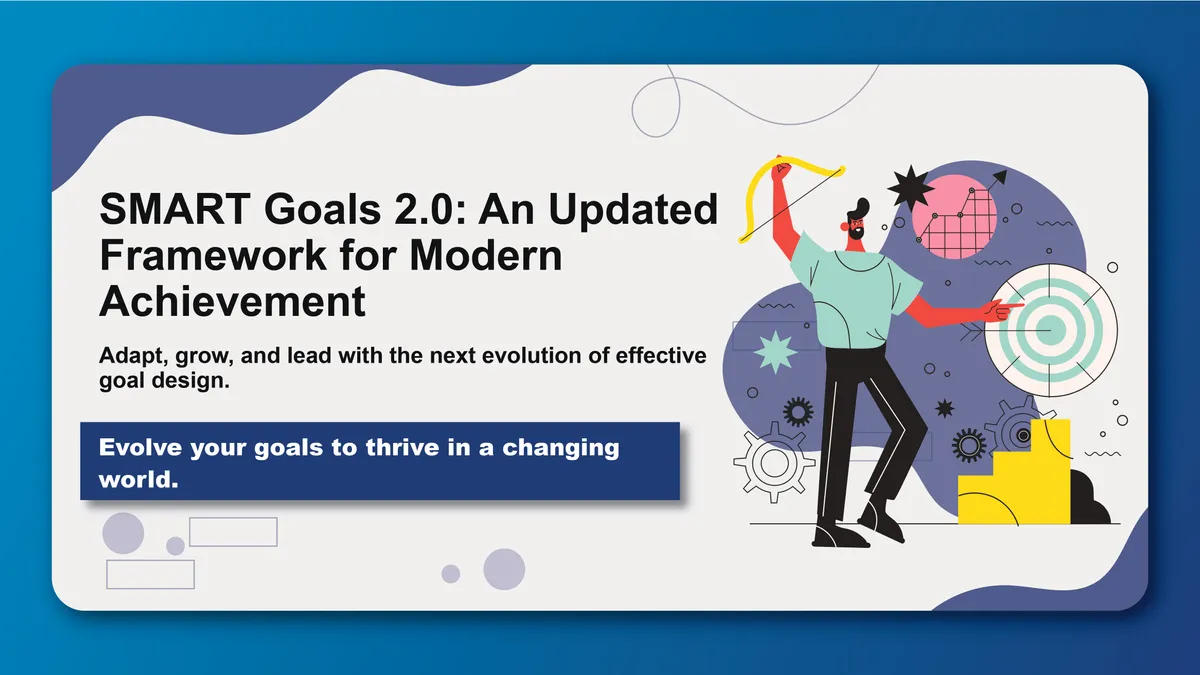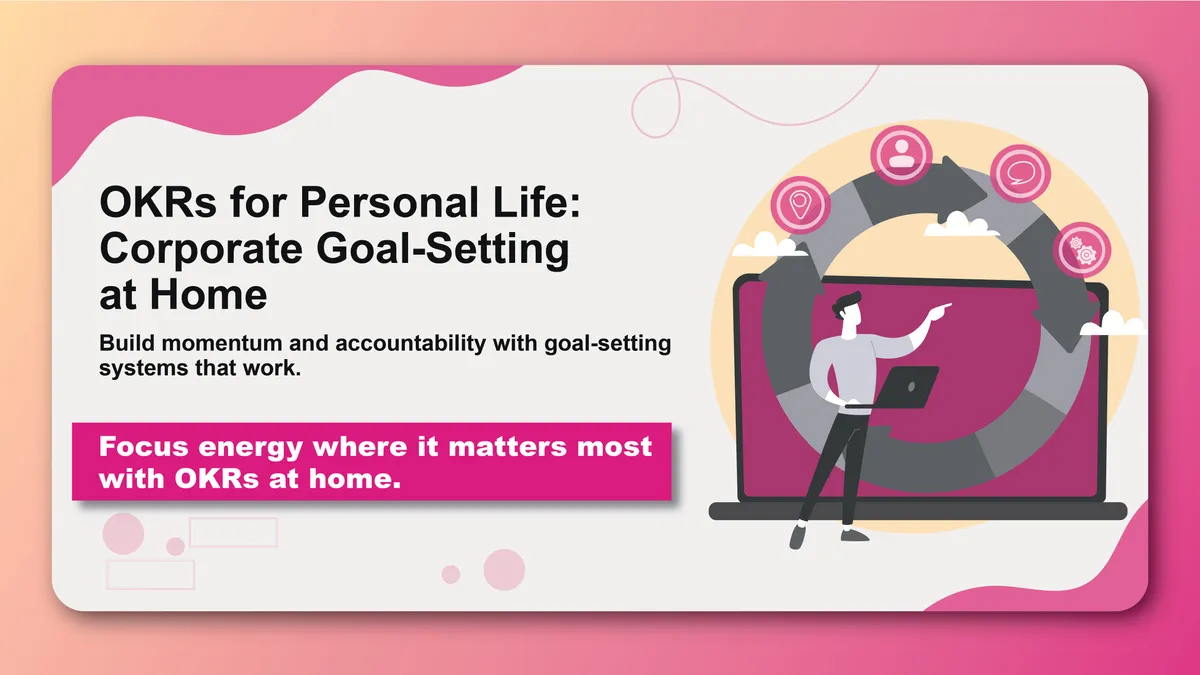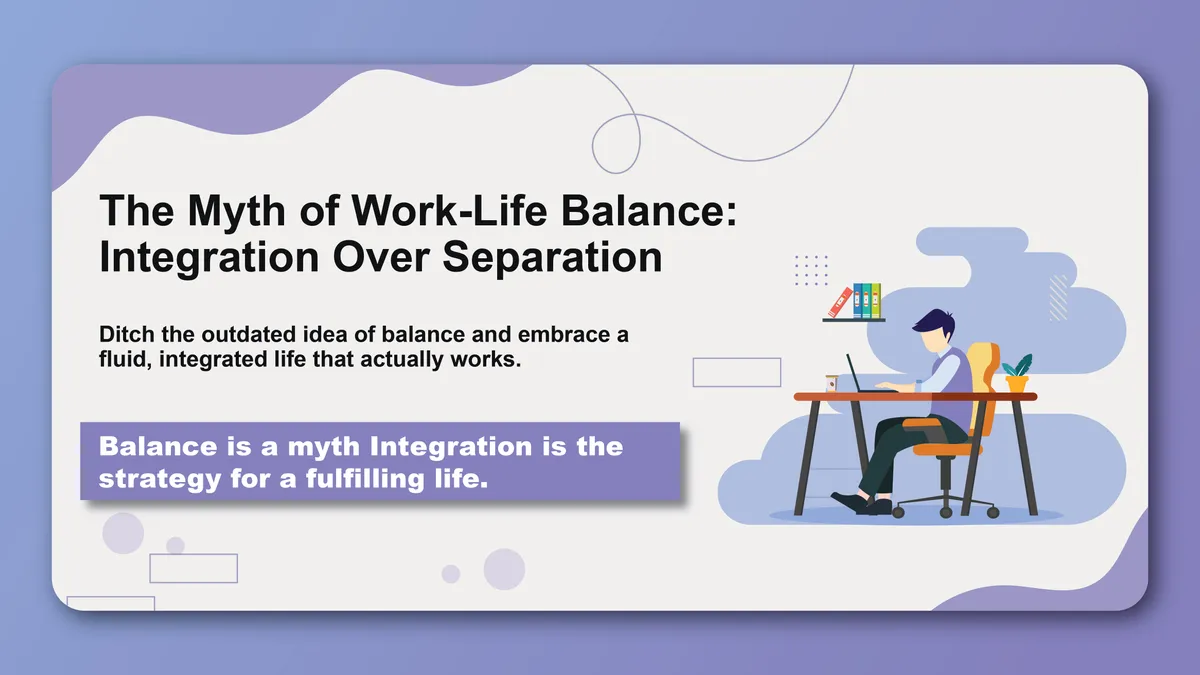The distance between a dream and its achievement often feels insurmountable. "Write a novel," "Start a business," "Get in the best shape of your life," "Learn a new language"—these ambitious goals inspire us but can also overwhelm us. The sheer magnitude of what we want to achieve can leave us paralyzed, unsure of where to start or how to make meaningful progress.
This is where the art of goal decomposition becomes essential. It's the skill of breaking down complex, long-term objectives into smaller, manageable components that can be tackled daily. It's the bridge between aspiration and action, between dreams and reality.
Goal decomposition isn't just about making lists or creating project plans. It's about understanding the architecture of achievement—how small, consistent actions compound into extraordinary results. It's about transforming overwhelming ambitions into clear, actionable steps that build momentum and create inevitable progress.
When you master goal decomposition, you gain the ability to approach any challenge with confidence. You develop a systematic way of thinking that turns complexity into simplicity, confusion into clarity, and overwhelming goals into achievable daily actions.
The Psychology of Goal Decomposition
Why Big Goals Feel Overwhelming
Cognitive Load: Our brains have limited processing capacity. When we try to hold an entire complex goal in our mind at once, we experience cognitive overload.
Ambiguity Aversion: Large goals often lack clear next steps, creating uncertainty that our brains interpret as threat, leading to avoidance behaviors.
Temporal Discounting: We naturally value immediate rewards more than future benefits, making long-term goals feel less motivating than short-term distractions.
Perfectionism Paralysis: Big goals often trigger perfectionist thinking, where we feel we need to have the perfect plan before we can start.
How Decomposition Solves These Problems
Reduces Cognitive Load: Breaking goals into smaller pieces makes them easier to process and remember.
Creates Clarity: Clear next steps eliminate ambiguity and provide obvious starting points.
Provides Immediate Rewards: Completing smaller tasks gives regular dopamine hits that maintain motivation.
Enables Imperfect Action: Smaller steps feel less risky, making it easier to start without having everything figured out.
The Layers of Goal Decomposition
Layer 1: Vision to Goals
Vision: Your overarching life direction and values Example: "I want to be a respected expert in my field who helps others grow"
Goals: Specific, measurable outcomes that serve your vision Example: "Become a thought leader in digital marketing by building an audience of 10,000 engaged followers"
Layer 2: Goals to Projects
Projects: Distinct bodies of work with clear outcomes and deadlines Example:
- "Launch a professional blog with 50 high-quality articles"
- "Speak at 5 industry conferences this year"
- "Build an email list of 5,000 subscribers"
Layer 3: Projects to Milestones
Milestones: Significant progress markers within projects Example (for the blog project):
- "Choose niche and create content strategy"
- "Set up professional blog platform"
- "Publish first 10 articles"
- "Reach 1,000 monthly visitors"
Layer 4: Milestones to Tasks
Tasks: Specific actions that can be completed in one sitting Example (for "Set up professional blog platform"):
- "Research and choose blogging platform"
- "Purchase domain name"
- "Set up hosting account"
- "Install and configure WordPress"
- "Choose and customize theme"
Layer 5: Tasks to Daily Actions
Daily Actions: The specific things you do each day that move you forward Example:
- "Write 500 words for next blog post"
- "Research and outline upcoming article"
- "Respond to comments on latest post"
- "Share article on social media"
- "Reach out to one potential guest blogger"
The SMART Decomposition Framework
S - Specific Breakdown
Principle: Each level should be more specific than the level above it.
Example Progression:
- Goal: "Get in excellent physical condition"
- Project: "Build strength and endurance while losing 20 pounds"
- Milestone: "Complete 12-week strength training program"
- Task: "Design workout schedule and track progress"
- Daily Action: "Complete 45-minute strength workout"
M - Measurable Components
Principle: Each level should have clear success criteria.
Example Progression:
- Goal: "Increase income by 50%"
- Project: "Launch freelance consulting business"
- Milestone: "Acquire 5 paying clients"
- Task: "Create client acquisition strategy"
- Daily Action: "Send 5 outreach emails to potential clients"
A - Achievable Steps
Principle: Each level should feel challenging but doable.
Example Progression:
- Goal: "Learn to speak Spanish fluently"
- Project: "Complete intermediate Spanish course"
- Milestone: "Master present and past tense conjugations"
- Task: "Study irregular verb patterns"
- Daily Action: "Practice 10 irregular verbs with flashcards"
R - Relevant Connections
Principle: Each level should clearly connect to the levels above and below it.
Example Progression:
- Goal: "Become a better leader"
- Project: "Improve team communication skills"
- Milestone: "Implement weekly team feedback sessions"
- Task: "Create feedback framework and guidelines"
- Daily Action: "Prepare questions for today's team check-in"
T - Time-bound Elements
Principle: Each level should have appropriate time horizons.
Example Time Horizons:
- Goals: 1-3 years
- Projects: 1-6 months
- Milestones: 2-8 weeks
- Tasks: 1-7 days
- Daily Actions: 15 minutes to 4 hours
Decomposition Techniques
1. The Backward Planning Method
Process: Start with your end goal and work backward to identify what needs to happen immediately before it.
Example: "Run a marathon"
- End goal: Complete 26.2-mile race
- Week before: Taper training and prepare race day logistics
- Month before: Complete longest training runs
- 3 months before: Build weekly mileage to 40+ miles
- 6 months before: Establish consistent running habit
- Today: Run for 20 minutes
Benefits: Ensures logical progression and identifies critical path
2. The Hierarchical Breakdown
Process: Create a tree structure showing how smaller components combine to create larger ones.
Example: "Launch online course"
Launch Online Course
├── Course Content Creation
│ ├── Curriculum Design
│ │ ├── Define learning objectives
│ │ ├── Create course outline
│ │ └── Design assessment methods
│ ├── Content Production
│ │ ├── Write course materials
│ │ ├── Record video lessons
│ │ └── Create supporting resources
│ └── Content Review
│ ├── Test course flow
│ ├── Gather feedback
│ └── Revise materials
├── Technical Setup
│ ├── Platform Selection
│ ├── Course Upload
│ └── Payment Integration
└── Marketing Launch
├── Pre-launch Campaign
├── Launch Event
└── Post-launch Promotion
Benefits: Visual clarity of how components relate to each other
3. The Timeline Method
Process: Create a chronological breakdown showing when different components need to be completed.
Example: "Plan wedding"
- 12 months before: Set budget, choose venue, hire photographer
- 9 months before: Send save-the-dates, order dress, choose caterer
- 6 months before: Send invitations, finalize menu, book accommodations
- 3 months before: Final headcount, confirm vendors, prepare ceremony
- 1 month before: Final fittings, rehearsal, prepare day-of timeline
- 1 week before: Confirm all details, delegate responsibilities
- Day of: Execute plan and enjoy celebration
Benefits: Ensures proper sequencing and deadline management
4. The Resource-Based Method
Process: Break down goals based on the resources required to achieve them.
Example: "Start a podcast"
- Equipment: Microphone, recording software, hosting platform
- Skills: Audio editing, interviewing, content creation
- Content: Episode topics, guest list, show format
- Promotion: Social media strategy, website, marketing materials
- Time: Recording schedule, editing time, promotion activities
Benefits: Identifies resource constraints and requirements early
5. The Skill-Building Method
Process: Decompose goals based on the skills and capabilities you need to develop.
Example: "Become a data scientist"
- Statistics: Probability, hypothesis testing, statistical modeling
- Programming: Python, R, SQL, data visualization
- Machine Learning: Algorithms, model evaluation, feature engineering
- Domain Knowledge: Business understanding, industry expertise
- Communication: Data storytelling, presentation skills
Benefits: Focuses on capability development rather than just task completion
Common Decomposition Mistakes
Mistake 1: Insufficient Breakdown
The Problem: Stopping at tasks that are still too large or vague to act on.
Example: "Write book" → "Write chapters" (still too vague) Better: "Write book" → "Write Chapter 1" → "Write Chapter 1 outline" → "Write introduction paragraph for Chapter 1"
Solution: Keep breaking down until you reach actions that can be completed in one focused session.
Mistake 2: Over-Decomposition
The Problem: Breaking things down so much that you lose sight of the bigger picture.
Example: "Learn piano" → "Practice scales" → "Practice C major scale" → "Practice C major scale with right hand" → "Practice C major scale with right hand, one note at a time"
Solution: Stop at the level that provides clear, actionable next steps without overwhelming detail.
Mistake 3: Linear Thinking
The Problem: Assuming all tasks must be completed in strict sequence.
Example: Thinking you must complete all research before starting any writing, when some tasks can be done in parallel.
Solution: Identify which tasks can be done simultaneously and which truly depend on others.
Mistake 4: Ignoring Dependencies
The Problem: Not considering how different components rely on each other.
Example: Planning to launch a product before the website is ready or marketing materials are created.
Solution: Map out dependencies and ensure prerequisite tasks are completed first.
Mistake 5: Forgetting Review and Adjustment
The Problem: Creating a decomposition plan and never revisiting it.
Example: Sticking to the original plan even when circumstances change or new information emerges.
Solution: Build in regular review points to assess progress and adjust the decomposition as needed.
Advanced Decomposition Strategies
1. The Minimum Viable Progress (MVP) Approach
Concept: Identify the smallest possible version of your goal that would still provide value.
Example: "Build a mobile app"
- Full goal: Feature-rich app with all desired functionality
- MVP: Basic app with core feature that solves main problem
- First milestone: Working prototype with one key feature
- First task: Create wireframes for core functionality
- Daily action: Sketch user interface for main screen
Benefits: Provides early wins and learning opportunities
2. The Systems Integration Method
Concept: Decompose goals to integrate with existing systems and habits.
Example: "Read 50 books this year"
- Integration point: Existing commute time
- System: Audio books during daily commute
- Daily action: Listen to audiobook for 30-minute commute
- Weekly milestone: Complete one book
- Monthly review: Assess progress and adjust selection
Benefits: Leverages existing routines for higher success rates
3. The Energy-Based Decomposition
Concept: Align tasks with your natural energy patterns and preferences.
Example: "Launch consulting business"
- High-energy tasks (morning): Client calls, proposal writing
- Medium-energy tasks (afternoon): Research, content creation
- Low-energy tasks (evening): Email management, social media
- Daily actions matched to energy levels throughout the day
Benefits: Optimizes performance and sustainability
4. The Skill-Stacking Method
Concept: Order tasks to build skills progressively, where each task prepares you for the next.
Example: "Become a public speaker"
- Level 1: Practice speaking alone (comfort with material)
- Level 2: Present to small, friendly group (basic presentation skills)
- Level 3: Speak at local meetup (audience engagement)
- Level 4: Present at industry conference (advanced presentation skills)
- Daily actions: Practice speaking exercises, prepare material, seek opportunities
Benefits: Builds confidence and competence systematically
Technology Tools for Goal Decomposition
1. Mind Mapping Software
Popular Options: MindMeister, XMind, Coggle Best For: Visual thinkers who want to see connections between components Features: Hierarchical structure, visual organization, collaboration capabilities
2. Project Management Platforms
Popular Options: Asana, Trello, Monday.com, Notion Best For: Complex goals with multiple dependencies and timelines Features: Task management, deadline tracking, collaboration, progress visualization
3. Goal Setting Apps
Popular Options: GoalsOnTrack, Strides, Way of Life Best For: Personal goal achievement with built-in tracking Features: Goal templates, progress tracking, habit integration, reminders
4. Outline and Planning Tools
Popular Options: Workflowy, Dynalist, Roam Research Best For: Text-based organization and planning Features: Hierarchical lists, cross-referencing, search capabilities
Building Your Decomposition Practice
Step 1: Choose Your Target Goal
Criteria for Good Practice Goals:
- Specific enough to be measurable
- Complex enough to require decomposition
- Meaningful enough to maintain motivation
- Achievable within a reasonable timeframe
Step 2: Apply the Decomposition Framework
- Vision: How does this goal connect to your larger life vision?
- Projects: What major components need to be completed?
- Milestones: What are the significant progress markers?
- Tasks: What specific actions need to be taken?
- Daily Actions: What can you do today to move forward?
Step 3: Test and Refine
Weekly Review Questions:
- Are my daily actions moving me toward my milestones?
- Are my milestones leading to project completion?
- Do my projects serve my larger goal?
- What adjustments need to be made?
Step 4: Build the Habit
Integration Strategies:
- Start each day by identifying goal-related actions
- Use a planning system that connects daily tasks to larger objectives
- Review progress weekly and adjust decomposition as needed
- Celebrate completion of milestones and projects
The art of goal decomposition transforms impossible dreams into inevitable achievements. When you master this skill, you gain the ability to approach any challenge with confidence, knowing that you can break it down into manageable pieces and tackle them systematically.
Remember that decomposition is not a one-time activity but an ongoing practice. As you make progress and learn more about your goal, you'll need to adjust your decomposition. The key is to maintain the connection between your daily actions and your larger vision, ensuring that every small step takes you closer to your ultimate destination.
Start with one meaningful goal, apply the decomposition framework, and experience how breaking big dreams into daily actions transforms aspiration into achievement.
Ready to master goal decomposition and turn your biggest dreams into daily reality? Plan and track your decomposed goals with Habityzer and experience how systematic breakdown accelerates achievement.



